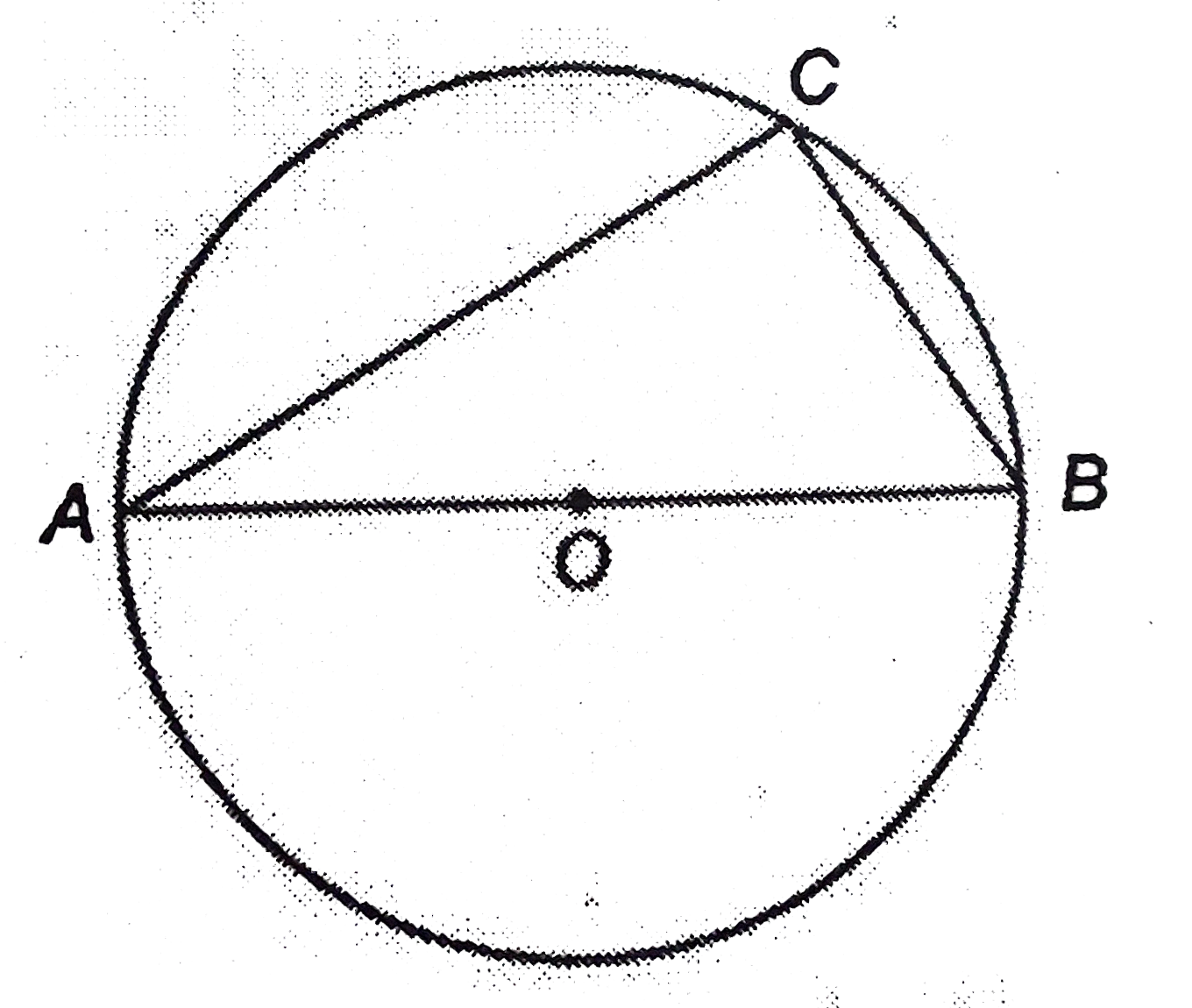The diameter of a circle is a line, which joins two points on the circle and also passes through the center of the circle. (In the adjoining figure AB is a diameter of the circle, C is its center). Express the diameter of the circle (d) in terms of its radius (r).
 .Solution in Punjabi
.Solution in Punjabi
The correct Answer is:2r
Step by step video, text & image solution for The diameter of a circle is a line, which joins two points on the circle and also passes through the center of the circle. (In the adjoining figure AB is a diameter of the circle, C is its center). Express the diameter of the circle (d) in terms of its radius (r).. by Maths experts to help you in doubts & scoring excellent marks in Class 6 exams.
Topper's Solved these Questions
- BOOK - NAND LAL PUBLICATIONCHAPTER - ALGEBRAEXERCISE - EXERCISE - 11.337videos
ALGEBRA
- BOOK - NAND LAL PUBLICATIONCHAPTER - ALGEBRAEXERCISE - EXERCISE - 11.417videos
ALGEBRA
- BOOK - NAND LAL PUBLICATIONCHAPTER - ALGEBRAEXERCISE - EXERCISE-11.118videos
ALGEBRA
- BOOK - NAND LAL PUBLICATIONCHAPTER - BASIC GEOMETRICAL IDEAS EXERCISE - SAMPLE PAPER FOR PRACTICE18videos
BASIC GEOMETRICAL IDEAS
Similar Questions
Make up as many expressions with numbers (no variables) as you can, from three numbers 2, 3 and 5. Every number should be used not more than once. Use only addition, subtraction and multiplication.
Make the other expressions.
2×(5−3)01:54View SolutionAnswer the following
Take Sarita's present age to be y years.
What will be her age 5 years from now?04:34View SolutionFind the rule,which gives the number of matchsticks required to make the following matchstick patterns.Use a variable to write the rule.
A matchstick pattern of letter T and t02:08View SolutionIf lines l and m intersect at a point Also m and n intersect at a point, is it necessary that lines l,m,n intersect at the same point.
01:41View SolutionDiameter a line segment passing through the centre of a circle and having its endpoints on the circle is called a diameter of the circle.
03:26View SolutionFill in the blanks: The diameter of a circle is … times its radius The diameter of a circle is the … chord of the circle. The diameter of a circle pass through…. A chord of a circle is a line segment with its end points on the … If we join any two points on a circle by a line segment, we obtain… A radius of a circle is a line segment with one end at …. and the other end at…. All radii of a circle are… The diameters of circle are… The total number of diameters of circle is… Every point on a circle is…from its centre.. A chord of a circle contains exactly….points of the circle.. A diameter is the longest… Concentric circles are circle having….
02:11View Solution8 cm त्रिज्या वाले वृत्त का केन्द्र A है। तथा 8cm व्यास वाले का केन्द्र B है यदि दोनो वृत्त बाह्य रूप से स्पर्श करते हैं, तब AB व्यास वाले वृत्त का क्षेत्रफल ज्ञात करें?
02:03View SolutionIn the adjoining figure, O is the centre of the circle and AB is its diameter. If AC=8 cm and BC= 6cm, then find the radius of the circle.
 03:53View Solution
03:53View SolutionIn the given figure (not to scale), O is the centre of the circle. A,B,C and D are concyclic and AB=CD . If /_MON =120^(@) , then find /_ OPN .
05:41View SolutionDetermine the point of symmetry of a regular hexagon.
02:50View SolutionIn the given figure, AB is a diameter, O is the center of the circle and ∠OCB=50∘ then find ∠DBC.
02:02View SolutionFind the area of the shaded region, given that the radius of each circle is equal to 5 cm.
04:16View SolutionMatch the following Column A to Column B
 06:49View Solution
06:49View SolutionIn fig. O is the center of the circle. Find the value of x.
ltimg src="https://d10lpgp6xz60nq.cloudfront.net/physics_images/PS_MATH_IX_C12_S01_031_Q01.png" width="80%"gt01:40View SolutionIn the following figure, if O is the center of the circle and ¯¯¯¯¯¯AB is the diameter, then find ∠ACB.
ltimg src="https://d10lpgp6xz60nq.cloudfront.net/physics_images/PS_MATH_IX_C12_E02_009_Q01.png" width="80%"gt06:05View SolutionIn the figure given below (not to scale), D is a point on the circle with center A and C is a point on the circle with centers B, ¯¯¯¯¯¯AD⊥¯¯¯¯¯¯BD and ¯¯¯¯¯¯BC⊥¯¯¯¯¯¯CA. Then which of the following is true?
ltimg src="https://d10lpgp6xz60nq.cloudfront.net/physics_images/PS_MATH_IX_C12_E06_004_Q01.png" width="80%"gt05:02View Solution

